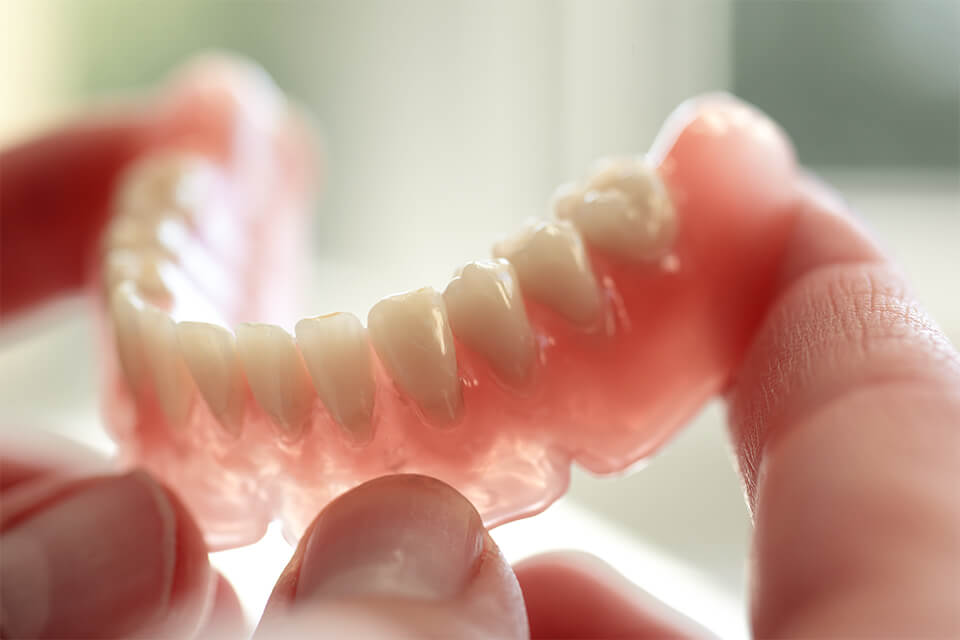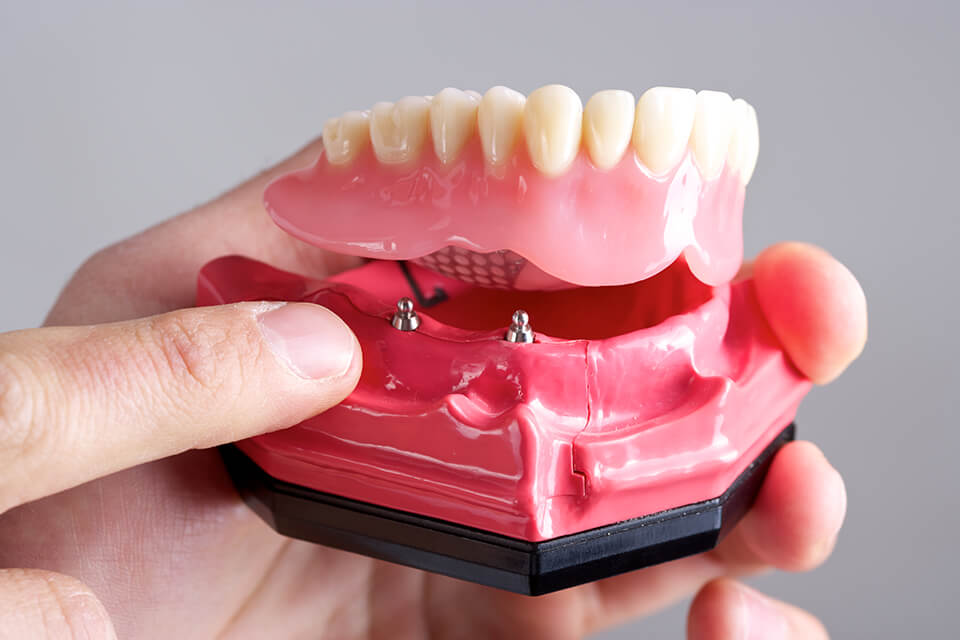Menu
Menu
Dental implants offer many solutions for people who have lost one or more teeth and are at risk of losing all their teeth at some point. Dental implants are like high-tech artificial tooth roots. They are placed under the gums in the jawbone and can be used to anchor a single tooth, several teeth or a complete set of teeth.
Until dental implants were available, dentists were limited to replacing teeth with bridges, partial dentures or full dentures. With dental implants, a single tooth can now be replaced by a single implant. However, it is not always necessary to have one implant per tooth. Several teeth can be replaced by a selected number of well-positioned implants. Often a complete set of fixed upper or lower teeth can be replaced by the support of four to eight dental implants.
When many natural teeth are missing or diseased, a treatment often proposed is to replace all the upper or lower teeth, including the few that are still viable. This is a proven and predictable solution. However, it is sometimes possible (and better) to replace the entire tooth in stages rather than all at once.
A gradual transition to total tooth replacement may be more attractive for people on a tight budget as well as for those who still have a number of good natural teeth to keep until replacement is inevitable. In this case, several options may be recommended.
For example, if the person does not want to wear dentures (full or partial), but there is a possibility that their teeth will eventually fall out, they can start with selective placement of simple dental implants. Alternatively, implant-supported dental bridges can be used: a partial row of prosthetic teeth attached to implants. Later, strategically located dental implants can be reassigned from a tooth support or bridge to a complete set of upper or lower teeth.

There are also people who already have partial dentures: one or more artificial teeth on a metal or plastic base, which attach to the remaining natural teeth and can be easily removed from the mouth. They are comfortable with this and want to keep their remaining healthy teeth as long as possible. But when one or more of these natural teeth have to be extracted (removed) due to damage or disease, it can create a dilemma: if they now remove the remaining healthy teeth along with the diseased teeth and get a full set of upper or lower replacement teeth, with perhaps four to eight implants? Or does it make more sense for them to continue using a removable prosthesis held in place by two implants and possibly move to full tooth replacement in the future? With this question in mind, let's take a closer look at the gradual transition to full tooth replacement.
The advantages of dental implants for tooth replacement are well known: they provide strong, durable support for replacement teeth that can last for decades; they allow people to bite, chew and speak without depreciation or discomfort; and they minimise any bone loss in the area of the jaw where they are placed, helping to preserve facial support (lip) and maintain the structure of the jawbone. This is why the dentist's first recommendation for repairing missing or irreparably damaged teeth is often a solution using implants - in the case of replacing all the teeth in the upper or lower teeth, for example, a non-removable (fixed) prosthesis is retained. placed by 4 to 8 implants. But this may not be the only option.
When appropriate, instead of immediately replacing all the upper or lower teeth, I offer my patients only one or two dental implants at strategic locations in the jaw. These implants can then be used to help anchor a complete set of teeth. But for now, the patient's existing partial dentures (or new ones of a similar type) can be securely anchored to the new implant on one side and the natural teeth on the other. This gives the denture all the support it needs to function properly for eating and speaking, while avoiding the removal of natural teeth that are still healthy. This solution is as minimally invasive as possible. It is also much less expensive - an important factor for many people.
Here's how placing one or two dental implants at strategic points in the mouth helps plan for the future: with one implant already in place, one more is usually needed to support a lower denture: a removable prosthesis that is safer than a traditional denture because it is held in place by implants. This is a functional and economical option that works for many people. However, some people prefer a fixed (non-removable) prosthesis, as it gives the impression of having natural teeth again. In this situation, four or more implants will often provide the necessary support, including those already in place.
In addition, an implant already in place helps to preserve the jawbone in that area, so less bone grafting should be required. Placing implants in certain key areas, for example near the canines or premolars, may result in a more favourable outcome in future years. Let's look at a real case where this comes into play.

I had a patient who was happy with her partial denture but had fractured a critical canine tooth that now needed to be extracted. At this stage, giving her another partial denture supported by a tooth near the front of her mouth was not a good option because over time the denture would cause the front teeth to shift. In addition, she did not want to go through the process of removing and replacing all her lower teeth immediately.
So we removed the broken canine and replaced it with an implant. Then we made her a partial denture that attaches to the implant on one side and a natural tooth on the other. It was a minimally invasive treatment that saved her remaining natural teeth and she is happy with it. Later, if her other teeth fell out, she would only need one more implant to upgrade to a basic implant-supported supplementary denture, or three or more for a full set of natural teeth.
One of the main advantages of staged implant placement is that it allows us to plan for the future: not just five years from now, but ten or even fifteen. I have found that the timely placement of just one or two implants allows dental care to fit better into my patients' lives, taking into account their time, health and financial situation. And while we don't know what the future holds, we can prepare for any eventuality with these strategically placed implants.
As dentists, our goal is to help patients achieve good oral health throughout their lives, which means eating healthily, smiling without embarrassment and speaking properly. Dental implants have helped countless people with missing teeth to enjoy these benefits. But it's important to remember that there is no single solution to dental problems. Just as each person is an individual, each problem may have more than one right answer. So be sure to discuss all your options for tooth replacement with your dentist. He or she can help you decide which ones are best for you.
Cabinet Dentaire Le 110
